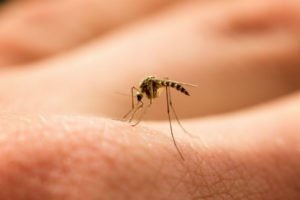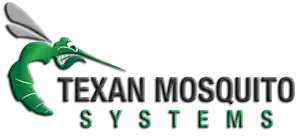You should contact Texan Mosquito Systems if you are searching “Sugar Land TX backyard mosquito control.” The Greater Houston Area is the perfect place for mosquitos to thrive. The constant heat and consistent rain make the area perfect for mosquitos. The proximity to the Gulf of Mexico also increases the presence of mosquitos.

Enjoy your backyard without the threat of mosquitos.
Terminix ranked Houston as the third most mosquito-infected city in the United States. This means residents need to be aware of their surroundings and the mosquito population in their backyard. Those pesky mosquitoes carry diseases that can be potentially dangerous to families. Mosquito-borne diseases affect approximately 7oo million people every year. Of those 700 million, one million of them die.
That is why your yard needs to be free of mosquitoes. Fortunately, there is a system that can help you eliminate that threat. Mosquito misting systems are the perfect option. These systems mist your backyard with insecticides targeting mosquitos.
Of course, there are other steps you can take to reduce their presence too. Before you take your own steps, it is important to understand the dangers of mosquitos and their life cycle. Knowing these details can help you combat their presence and allow you to enjoy your backyard.
Mosquito-Borne Diseases
There are a plethora of mosquito-borne diseases. Many of these diseases affect South America and Africa, but the United States reports thousands of them every year. It is important to use preventative methods when combating mosquitos. You can wear long-sleeve shirts and pants, use mosquito repellent, and perform frequent lawn maintenance. Of course, these are not always enough.
Mosquito-borne diseases include the following:
- Malaria
- Yellow Fever
- West Nile Virus
- Zika Virus
- Dengue
- Chikungunya
- Saint Louis Encephalitis
- And More!
The disease above range in severity. Some are capable of leading to extreme illness or even death. The best thing you can do to prevent these insects is to know their life cycle.
The Mosquito Life Cycle
The life cycle of the mosquito is broken up into four distinct phases: egg, larvae, pupa, and adult. Three of four of these stages are completed within the water. This means water is a critical part of their life cycle.
Egg

Female mosquitos are the only ones to feed on blood.
There are many different species of mosquitos, and they defer in how they lay their eggs. Many mosquitos lay their eggs on the surface of the water like a raft. A female can lay up to 200 eggs at a time. On the other hand, other species lay their eggs individually and in damp soil that will be flooded with water later. Regardless, eggs typically hatch within 48 hours.
Larva
A larva will break out of the egg and begin feeding. Larvae feed on the microorganisms and organic matter within the water. Depending on the species, the larvae may need to return to the surface of the water to receive oxygen. Other species hang upside down and breath through a tube at the surface of the water. One other type can attach itself to plants for oxygen. This phase also includes molting. Molting is the process of an outer layer being removed to make room another. With each molt comes a larger form. By the fourth molt, the larva transforms into a pupa.
Pupa
The pupal stage is for resting rather than feeding. Pupae can move, however. They usually respond to light changes and can swim to the bottom of their water source for safety. This process is similar to that of a caterpillar in a cocoon. Metamorphasis is the process of an immature stage transitioning to an adult form.
Adult
Once the pupa has completed its transition, an adult will emerge. The skin splits, and the mosquito makes its way to the surface. The mosquito is unable to fly right away. It must let its body harden, and its wings air dry. When they are dry, the mosquito will fly off. Mosquitos will not feed or mate for another few days. Males feed on nectar and mate for the rest of their life while females feed on blood and only mate once.
The length of the entire cycle greatly depends on the species and the climate. For example, a warmer temperature can speed up the process, while a cooler climate can make it longer. Furthermore, some species have adapted to making their cycle only four days while others last a month.
Methods of Removing Mosquitos From Your Backyard
There are several methods of removing mosquitos from your backyard. Of the first things you can do is remove standing water that is not necessary. Often times, we leave a variety of junk around our backyards. Buckets, barrels, and tires are common places water can collect. Mosquitos only need a half-inch of water to lay their eggs. So, remove these pieces of junk or ensure they are not carrying water.

Maintain your backyard so the mosquito presence is limited.
For those sources of water that you cannot remove like your pool, pond, or fountain, you can treat them. Mosquito Dunks are an effective method of preventing mosquitos from growing in your backyard. Dunks use natural bacteria that are highly toxic to mosquitos. Simply toss a dunk in, and the water will be protected for 30 days. Dunks are not toxic to other animals, so fish and birds are safe.
For your pool, you should ensure it is properly chlorinated. The filter and the rest of the system should be operating nominally. If that is the case, then you shouldn’t have to treat your pool with Mosquito Dunks.
Finally, you should cut your grass to at least five inches and pull any tall weeds. Mosquitos love to rest during the day, and tall grass is their favorite place. Remove overgrown areas for your backyard, so they have nowhere to rest.
Sugar Land TX Backyard Mosquito Control
As you can see, there are numerous methods of preventing mosquitos from entering your backyard, but the best option is a misting system. Texan Mosquito Systems should be your go-to company when it comes to a misting system. Give us a call at (713) 766-1090. Our team will help install, maintain, and repair your mosquito misting system. So, stop searching “Sugar Land TX backyard mosquito control” and start calling!
Fun Facts about Sugar Land
- Town Square covers 1.2 acres providing a public plaza for community-wide events and gatherings.
- Sugar Land has more than 560 acres of developed parkland.
- The Sugar Land Town Square used the 3D projection technology used in the 2010 Olympics on New Year’s Eve 2009.
- Find more facts about Sugar Land here.
